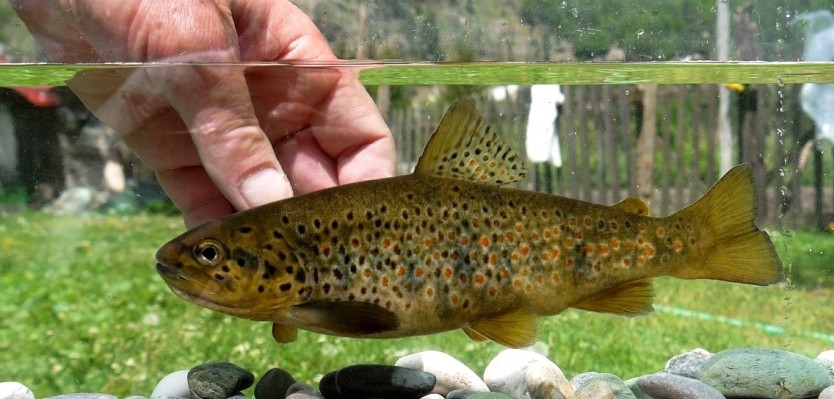
Some work to be done here
Having visited the upper Valbona and Cemi rivers, we became aware of both their character and nature, the threats and opportunities for the wildlife and the people present, and the differences between the two catchments. We departed from the intention to “use” their very trout as an indicator and flagship in both of them. We still do, yet realize that our approach must differ in priorities, time frame, planning, and budget. Should we choose to focus on one catchment only, it shall be the Valbona to start with.
We have now developed a master plan, aiming at a clear, long term approach for trout and ecosystem conservation as such. The ultimate goal with be to enhance the local situation and the socio-economic prospects in remote, rural areas through introducing and promoting ecotourism. To this end we shall depart from at least one realistic, feasible, and fundable pilot project: the Valbona river system.
Assessment of the existing wild trout populations is an important precondition. Currently the DNA samples we took are being analyzed by Aleš Snoj and his team, at the University of Ljubljana. All results will become available in the frame of an official report. Aleš suggested awaiting these results first. They are expected this summer. Upon these we can decide whether additional genetic research is required. If so, it might be the start of a serious population analysis in the wider area. Several organisations and institutes in Albania already have expressed their interest, and their support. From here onwards we can also make an inventory of other fields of interest for further research. Especially ecological assessments of the trout habitats are the order.
Our main focus, however, will be to get the support of the public, especially that of the local people in the valleys. To this end we need to make natural heritage in Albania’s alpine areas and biodiversity visible, and stress their vulnerability. This means raising awareness of the importance of (the availability of) fresh water, the river providing it. The life in such river, the ecosystem of which this river is part, and the roles, responsibilities and accountabilities of humans who are part of that very ecosystem too…
And, last but not least, it must be pointed out to fishermen –locals and foreigners- their rights and obligations, in every way. Mind you, we aim at introducing sustainable fishing and ditto fisheries in areas where even “outdated” techniques are still being used. Also, where wild, native trout are being commercialized to a growing extend. We really aim to ban this. Impossible? In Spain, for instance, a recent law which prohibits such commercialization benefitted the endemic trout to a huge extend.
Taking too much? Aiming too high? We shall, indeed, not have a dull moment.

